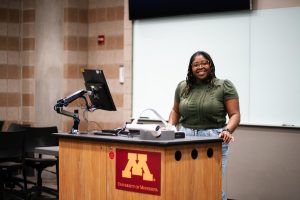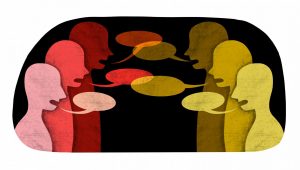In 1934, the UniversityâÄôs then-President Lotus Coffman said, âÄúThere is a need for new values to sustain the morale of individuals in the days ahead. The arts are a source for such values and I want this university to play a leading part in instilling them.âÄù 1934 was a year of remarkable turbulence in human history. Hitler was elected Fuhrer of Germany, Ghandi resigned permanently from his official leadership position in India, the Great Dust Storm ravaged our own plains states, and StalinâÄôs âÄúGreat TerrorâÄù began in Russia.
It was also the year that the leader of our university, President Lotus Coffman, as quoted above, first articulated the need for an on-campus art museum. In the troubling days ahead, Coffman looked to art as both an antidote and an escape from the surrounding reality. It was his vision that laid the groundwork for what would eventually become the Weisman Art Museum.
Today, as the Weisman re-opens, I think it is a fitting time to reconsider the pertinence of CoffmanâÄôs words and reflect on the role art can play in our individual lives.
In my own life, I can recall numerous evenings spent staring at the chewed pages of art books âÄî apparently even my beagle had a taste for talent. My family, though none of us were artists, had books on Picasso and Monet. We had Norman Rockwell, Georgia OâÄôKeefe and âÄúPaintings of The American LandscapeâÄù.
I loved them all, but no single image was imprinted my mind as thoroughly as âÄúThe Potato EatersâÄù by Vincent Van Gogh. The sullen, waxy faces of that painting affected me in a way IâÄôm sure they have many of you; they seemed to beg personal awareness towards their lives.
They nearly reprimanded me should I have felt pity, as the warm tones communicated even to a child that this was a family I was viewing, and that their love for each other was heartier and more abundant than their crop. I would spend hours considering the stories of the lives in that painting, eventually developing what I now recognize was compassion for people I would never meet. Perhaps this building of compassion was one of the values Coffman saw in art in 1934.
It probably is never just the art, but the way art plays on our own experiences that is so affecting. At that time in my life, my family was getting by âÄî barely. The images on those pages, whether of decadence or despondence, reminded me that there were entire worlds existing beyond the realm of my experience. In moments of sadness, those images offered comforting solidarity. At times of inspiration, I found images to nourish dreams beyond anything we were living. To a child, if the pictures existed, somewhere, that reality must exist somewhere as well.
As IâÄôve aged, art has grown more challenging, often presenting me with images more confusing than a starving family. The world, perhaps, has grown more challenging, too. We donâÄôt have the Dust Bowl, but we do have climate change. We donâÄôt have a war in Europe, but we do have international terrorism and wars in the Middle East. Ghandi is gone, but as Liu Xiaobo reminds us, being persecuted for peace is not a thing of the past.
As society has gotten more complicated, in some ways, so has art. As our lives have become harder to make sense of, linear story lines once presented in tapestries or church windows have been succeeded by abstract pieces that seem to emote an experience to a viewer rather than detail it. Perhaps in this fast-paced world, where communication is more often facilitated by âÄúpokingâÄù on Facebook than by actually holding hands, taking time to connect to each other through art has never been more important.
The WeismanâÄôs reopening offers us an opportunity to make those personal connections through its permanent collections, temporary exhibits, and an array of other art-infusing opportunities. The permanent collections include one of the largest assemblies of Korean furniture in America; ceramics that encourage students to consider common difficulties people have faced across centuries and continents in their synonymous attempt to create from clay; Mimbres Pottery which recounts the daily life of some of North AmericaâÄôs own native people; and American Modernism, an assortment of paintings that marked the reorienting of the arts world from Europe to New York City.
In alignment with CoffmanâÄôs original vision, the Weisman offers a surprising level of accessibility that reaches beyond the museumâÄôs walls. The museum has an art rental program for students, faculty members and departments. As part of this program, one can choose from over 300 original, framed, ready to hang pieces for a nominal semester fee.
Additionally, the Weisman seeks student involvement through âÄúWAM! Now ThatâÄôs Art!âÄù a program which challenges students to seek out and appreciate the artistry in every day life. Through this online forum, students can upload personal photography, have it virtually framed, and have it displayed on the WeismanâÄôs website.
The reopening of the Weisman Art Museum affords us an opportunity to reconsider artâÄôs role in our own lives. Perhaps looking to art to as a means to revisit some of those values of compassion, interpretation, forgiveness, and consideration is as important today as it was in CoffmanâÄôs original vision of 1934.







